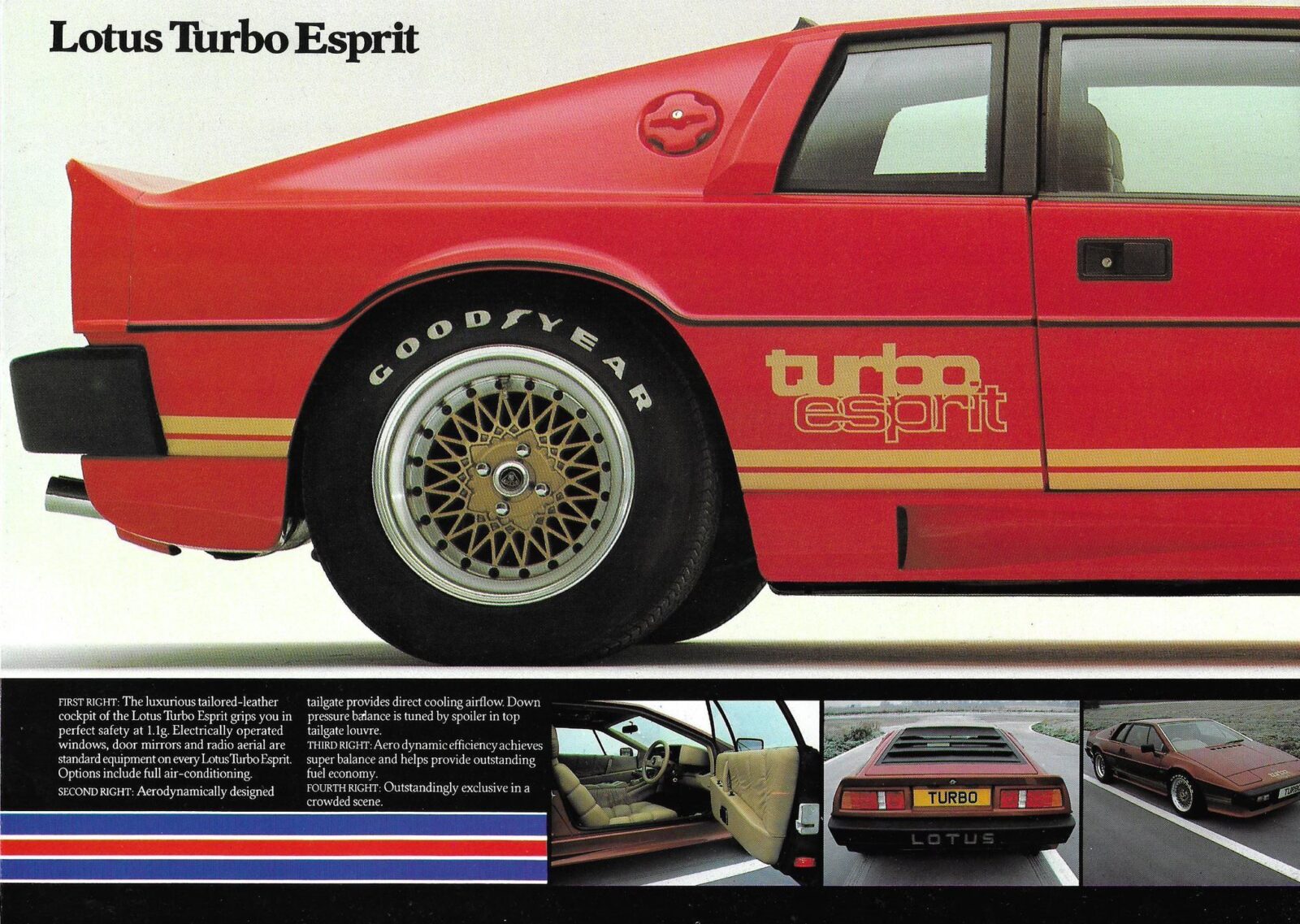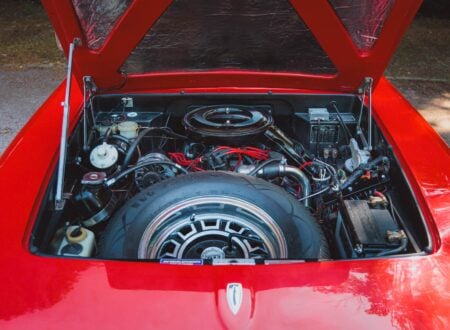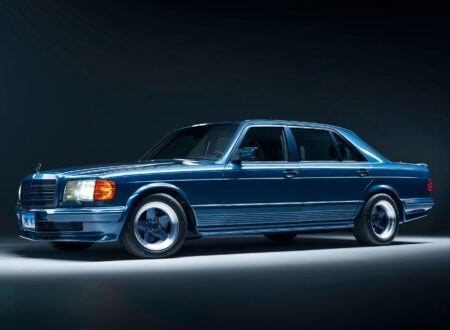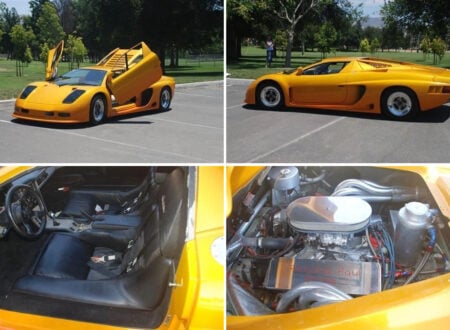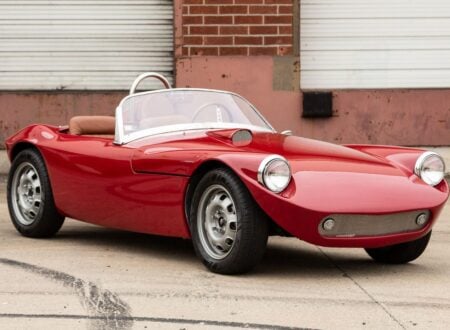Background: The Four Cylinder Lotus Esprits
The Lotus Esprit was created as a car that would transform Lotus from being a kit car and enthusiasts automobile builder to being a supercar builder. It was a bold gamble but it succeeded despite the fact that Lotus founder, Colin Chapman, did not live long enough to see his vision for a Lotus that would compete with the likes of Lamborghini and Porsche reach the final pinnacle of its design.
The Lotus Esprit was progressively improved over its history (click here to read the Silodrome Brief History of the Lotus Esprit) and it is important to understand the development process that the car went though from Series 1 through to Series 4 because different series present some different things to consider both in your choice of a car to purchase, and in your expectations of what a car will require in terms of bringing it up to an excellent standard and keeping it there.
Series 1 (1976-1978)
As one might expect the Lotus Esprit Series 1, which was made from 1976 until 1978, was very much a pioneering model. Lotus were moving upmarket and so the Series 1 cars are a mix of “old Lotus”, reminiscent of the Europa (on which chassis the original Esprit prototype was based) and “new Lotus”, the junior supercar “Porsche slayer” that the Esprit aspired to become.
Front suspension was courtesy the Vauxhall Cavalier as were the brakes, and many other parts of the car were off the shelf components used in other British cars: so these early Esprits were not yet built from unique Lotus parts. The wheels were stock items by Wolfrace giving the newly minted Esprit a bit of a kit car look in the eyes of some.
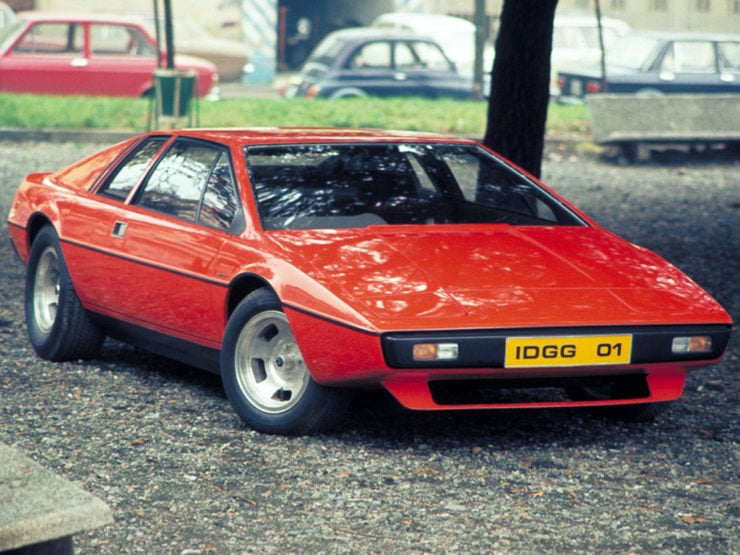
It was a Series 1 Esprit that appeared in the James Bond movie “The Spy Who Loved Me” and a Series 1 body was re-created into the submarine car, although it was actually a wet submarine made to look like the Esprit. This public exposure was helpful in getting the Esprit into the public mind.
Series 2 (1978-1981)
The Series was mechanically mostly the same as the Series 1 and amounted to a bug-fix and quality control improved version. The seats were made wider and car’s previously difficult to see Veglia instrument panel was replaced by individual gauges by Smiths which were much more British and significantly more visible. The Series 2 cars also feature illuminated switches and other interior fittings from the Morris Marina.
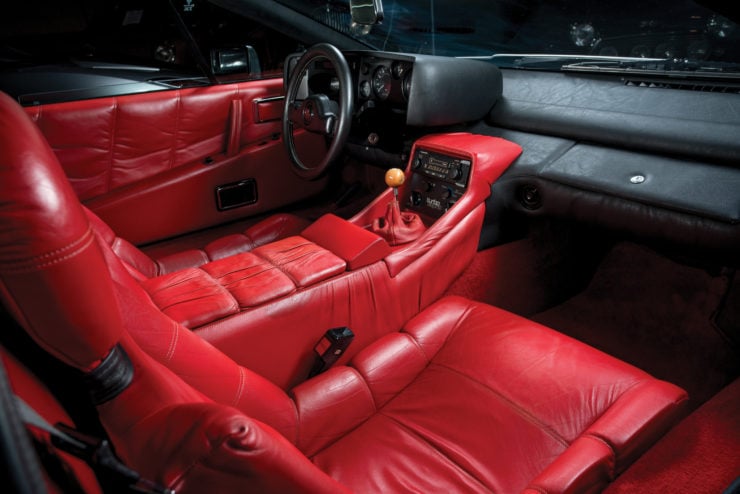
Changes to the body included air intake ducts being fitted behind the rear quarter windows and the front spoiler was redesigned by Guigiaro to be a more integrated wrap around unit. The other major upgrade to the appearance of the Series 2 was the replacement of the stock Wolfrace alloy wheels with custom wheels made for Lotus by Italian company Speedline.
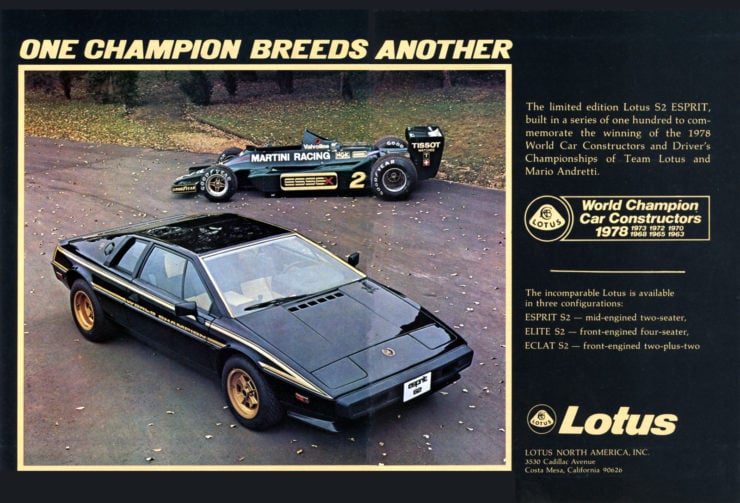
The Series 2 was given a power upgrade to the 2.2 litre Type 912 engine in May 1980. This engine upgrade was followed by the introduction of the “Essex” version fitted with the turbocharged dry sump Type 910 which delivered 210 hp @ 6,250 rpm with torque of 200 lb/ft @ 4,500 rpm: this serving to put to rest all criticism of the Esprit’s “lack of power”.
The Lotus Turbo Esprit was made at the same time as the Essex and was for people who did not want their car painted in the Essex colours – pretty though they were.

The turbocharged cars were treated to some chassis upgrades. The Vauxhall Cavalier derived front suspension was done away with and changed to a new Lotus design which comprised an upper wishbone combined with a lower transverse link, the assembly being attached to the new front box section of the chassis. The rear suspension redesign incorporated upper links to take over the support role previously filled by the drive shafts.
So during production of the Series 2 all three of the Lotus Esprit 900 series engines were in production: the 2 litre Type 907, the 2.2 litre Type 912, and the 2.2 litre turbocharged Type 910.
Series 3 (1981-1987)
The chassis upgrades done for the Series 2 Turbo Esprit were fitted as standard to all models from April 1981 onwards, so the new Series 3 boasted unique and purpose built Lotus suspension. The Series 3 cars exhibited the best quality build and were a genuine competitor to the likes of Porsche and even Ferrari. For the Series 3 the dry sump previously used for the turbocharged cars was replaced with a conventional wet sump.
The X180 (1987-1993)
In a departure from the boringly British Series numbers the next group of models were labelled the X180 and were made between 1987 to 1993. The bodywork was given a best of British restyling courtesy Peter Stevens who would go on to work for McLaren and design their F1. Despite its very new look the X180 was very much the child of the Series 3 Esprit although a number of high performance engine versions were made for it, but they were all based on the same three engines the car was already being fitted with.
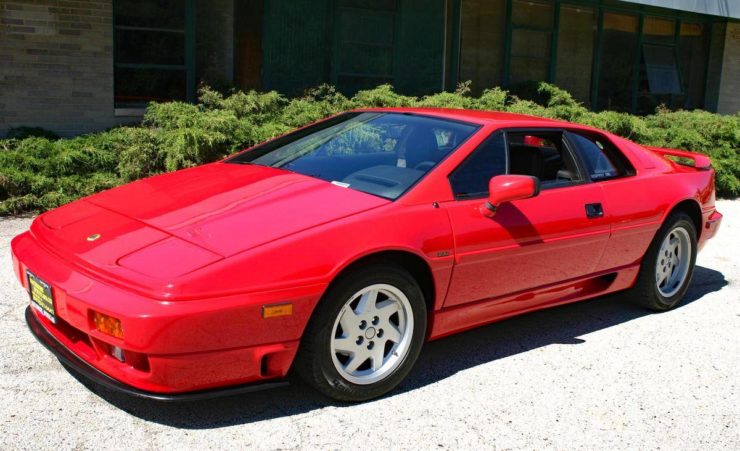
The big technological advance that came with the Peter Stevens styling was that Lotus patented a fiberglass manufacturing process called Vacuum Assisted Resin Injection (VARI). In this process vacuum is used to assist the resin flow into the mold. Lotus used this process to incorporate Kevlar into the body roof and sides to significantly improve roll-over protection, with the added advantage of making the overall body shell 22% more rigid.
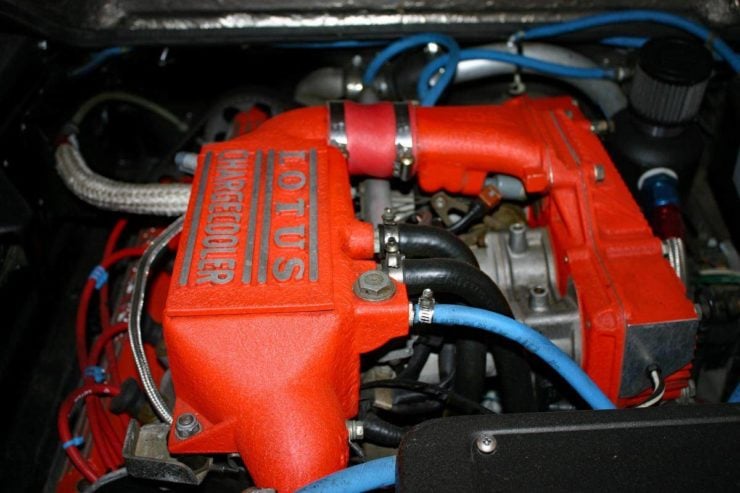
Series 4 (1993-2004)
The Series 4 remained mechanically just like the Series 3 but the bodywork was restyled by Julian Thomson who would go on to become Creative Design Director of Jaguar Range Rover.
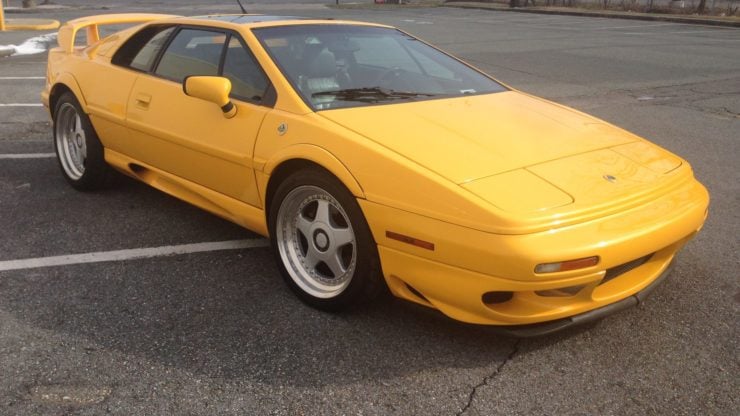
The Series 4 cars would get power steering and increasingly more sophisticated versions of the DOHC Lotus 900 engines. It would also be the Series 4 that would be the vehicle into which the V8 version of the Lotus 900 engine would be installed.
The Lotus 900 Series Engine
The engine that beats in the heart of the Lotus Esprit is the two litre, four cylinder, double-valve, DOHC 900 Series, which Lotus created during the 1960’s to power the range of upmarket sports cars they planned to lift the company out of the kit car and enthusiast car spectrum to soar up to share the same stratospheric status of Maserati and Ferrari.
Not only was the new engine to be used as a four cylinder however as Colin Chapman had the vision that it would also be built as a four litre V8 that could be used for Indianapolis racing. That future V8 would later be installed in the Series 4 Lotus Esprit.
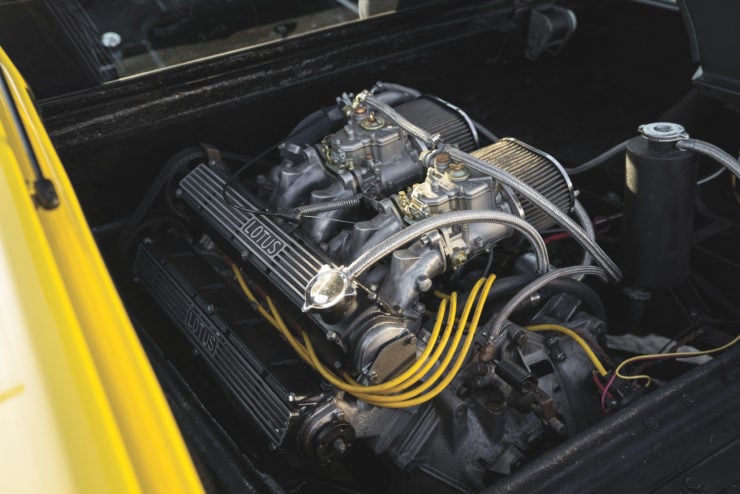
Lotus engineers Steve Sanville and Ron Burr had the cylinder head design done by 1967, when providence stepped in and British car maker GM Vauxhall introduced a new 1,973 cc (120.4 cu. in.) alloy slant four cylinder engine whose block was to be a perfect fit for the newly minted Lotus cylinder head. So the new Lotus engine was made production ready in 1970 using that Vauxhall block under the leadership of Engineering Director for Road Cars Tony Rudd, who had previously worked for racing car maker BRM.
For the Lotus Esprit there were three versions of this engine used; The Type 907, 1,973 cc (120.4 cu. in.) DOHC inline four cylinder breathing through twin Dellorto carburetors and producing 160 hp @ 6,580 rpm whilst delivering 140 lb/ft of torque at 4,800 rpm in European configuration, and 140 hp in US market configuration. The second is the Type 912 engine which has an increased capacity of 2.2 liters (2,174 cc/132.7 cu. in.) and also breathed through Dell’Orto 40 DHLA carburetors . Despite the larger capacity the power output remained the same as for the smaller engine but the torque was increased to 160 lb/ft with the result that this engine has improved mid-range performance.
The third of the four cylinder 900 engines is the 2.2 liters (2,174 cc/132.7 cu. in.) Type 910 which is fitted with a Garrett AiResearch T3 turbocharger set to provide a boost of 8 psi (0.55 bar) through twin pressurized Dell’Orto 40 DHLA carburetors. This engine delivers 210 hp @ 6,250 rpm with torque of 200 lb/ft @ 4,500 rpm. This engine was originally installed in the Esprit Essex and was fitted with a dry sump but this was changed to a wet sump in 1983.
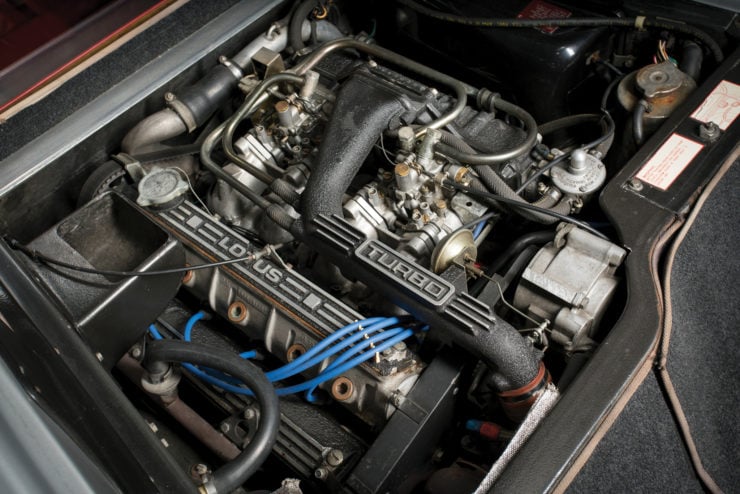
The Type 910 engine was fitted with new camshafts to increase both valve lift and duration, sodium filled exhaust valves, and enlarged coolant passages in the cylinder head to compensate for the increase in the combustion heat generated. It was also provided with a strengthened lower main-bearing girdle to cope with the substantially increased forces the engine was generating, and the clutch diameter was increased by an inch for the same reason.
These Lotus Esprit engines are high performance units and by definition require more, and more expert mechanical attention than the pedestrian car engines found in lesser vehicles. So, when buying a used Esprit checking just how conscientiously the car has been maintained will be a key indicator of problems that might not be obvious at the time of purchase but that will likely rear their ugly head once you become the proud owner. A private sale car tends to come with a “12/20 warranty” – i.e. 12 yards from the vendor’s driveway or 20 minutes whichever comes first, so checking the car’s service receipts is a smart thing to do: think of it as bank balance protection.
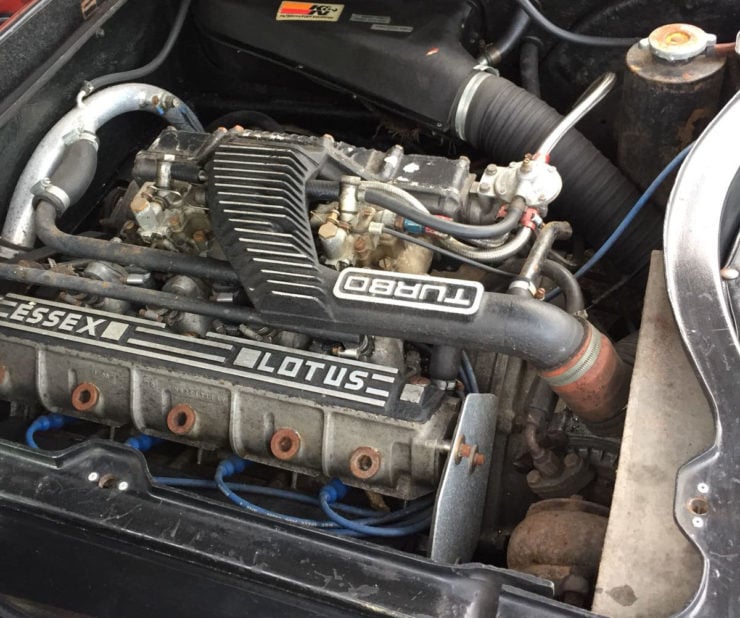
When looking at the car’s service record pay attention to whether the work was done by a Lotus professional, or by someone else. Work done by a Lotus trained person is always preferred.
Better still, if its possible, get a Lotus professional who is not involved in the sale to do a detailed assessment of the car rather than trying to do it yourself. In any event, watch that servicing has been done every 6,000 miles or every six months for a low mileage car. The timing belt needs to have been changed every 24,000 miles
Ensure that the oil filter is a genuine Lotus one and not just the Ford stock part. The Lotus oil filter is more expensive but has an anti-drain valve. This is important because the oil pump is located high in the engine and the anti-drain valve ensures that oil is kept high in the system to minimize big-end knock on start-up. The longer those big-ends are knocking the more the engine is getting knocked up – so economizing on the oil-filter is false economy.

The Lotus 900 Series engine was actually first fitted, not in a Lotus, but in the Jensen Healey. It was in the Jensen Healey that the teething problems were identified and sorted out, problems of high oil consumption and of distorted cylinder liners. The Type 900 engine has a potential oil leak area in the cam carriers and covers.
Commonly this requires a new gasket and using a torque wrench to secure the covers at the correct tension. Just tightening up the screws is not an effective solution and can result in stripped screws and much wailing and gnashing of the teeth.
Oil pressure can be as low as 5psi on idle, about 35psi @ 3,500rpm, and should a bit north of 45psi @6,500rpm.
A common fault on the 900 engine is cracking of the exhaust manifold. Problems with that will be compounded on a turbocharged Type 910. Check that the boost pressure does not rise above 0.8bar and that the wastegates are operating correctly – which you should be able to hear.
Other than that the usual checks that one performs to look for faults in an engine should be performed including checking for oil and coolant leaks, compression/cylinder leakage etc.
Transmissions
There are two types of transaxles to be found on the various models of the Esprit. The earlier series of cars up to 1987 are fitted with the Citroën C35 five speed manual transaxle, the same transaxle as the used in the beautiful Citroën SM and the exquisite Maserati Merak. The later cars from 1988 onwards are fitted with a six speed Renault UN-1. The Citroën C35 equipped cars have inboard rear disc brakes while the cars with the Renault UN-1 six speed transaxle have outboard rear disc brakes.
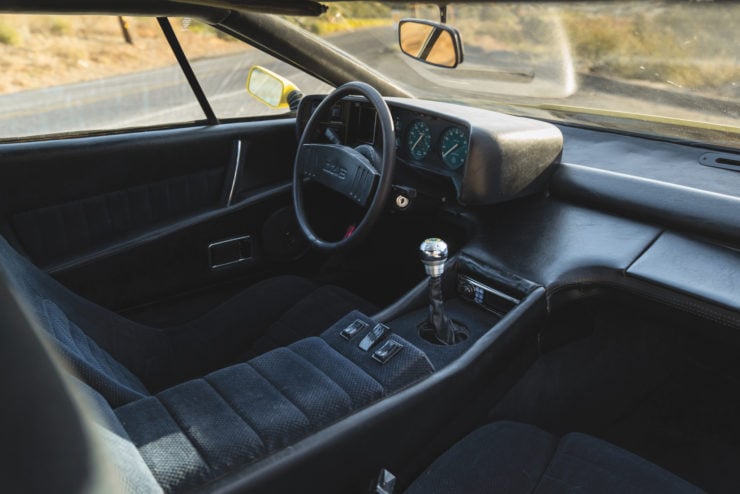
Both gearboxes are reliable with the Citroën C35 being regarded as having the nicer gearchange. The reason for the changeover to the Renault being the move to more powerful engines for which the C35 box was not suited. The watch point for the Citroën C35 box is the clutch spigot bearing which must be greased when installed. Checking to ensure this was replaced if the clutch was repaired is wise as failure can cause damage to the engine crankshaft.
Suspension
For the Series 1 and 2 cars the front suspension was from the Vauxhall Cavalier Mark 1 and comprised upper and lower wishbones with coil springs and telescopic shock absorbers, and a Vauxhall Cavalier anti-roll bar. The lower wishbones are known to occasionally develop cracks near the anti-roll bar mountings.
The rear suspension was all Lotus and comprised tapering box-section trailing arms with lower lateral links. The driving half-shafts coming from the transaxle were not given any provision for plunge and were intended to provide lateral support by transmitting suspension forces into the engine and transaxle assembly, meaning that the car’s handling at the rear became dependent to some extent on the stability of the engine and transaxle mountings.
The upshot of this is that the driving half-shafts serve as suspension components and so it is wise to ensure the correct Hardy-Spicer universal joints are used. It is also best to ensure the use of the correct wheel bearings front and rear and that they have been regularly and correctly greased. Suffice to say that for the early Esprits the rigidity of the engine and transaxle mountings is important to the car’s handling.
After 1985 the front suspension used some Toyota components and is rather more trouble-free.

Steering
The Esprit features rack and pinion steering and its important to remember that a steering rack needs maintenance, and it ultimately wears out requiring replacement. Not only does the rack itself need maintenance but also the universal joint on the steering column. If the steering of the car seems unusually heavy then that universal joint is a likely culprit.
Brakes
The brakes of the various models of the Esprit are all conventional and excellent. The one area of likely problems is the handbrake mechanism. The handbrake system is difficult to access to maintain and the handbrake lever located on the floor by the scuttle may have been accidentally kicked or otherwise subjected to things that encourage breakage. Fixing a faulty handbrake is expensive because it is awkward to do.
Interior
The standard of interior fittings of the Esprit began with the Series 1 being a bit shoddy. Things progressively improved moving up towards the Series 4 cars which are the best of them all. When looking at an Esprit, as with inspecting any used car, the condition of the interior can be a good indicator of just how much care and attention the car has been treated to – or, conversely, how much casual abuse it has had.

The interior is a good place to assess the electrics of the car you are looking at. Meticulously check every function ensuring that everything works as it should. Faulty electric windows are often caused by a failed switch. Headlight pods can be subject to shorting because of water getting into the electrics. Inspection by a specialist or at least an automotive electrician is recommended.
Chassis
The Lotus Esprit was made the “Lotus way” with a steel backbone chassis and a fibreglass body that had been lowered down onto it and then bolted securely. The chassis of the early cars was not galvanized so cars made before 1980 need to be checked for rust. Post 1980 cars which have a galvanized chassis also need to be checked but they are much less likely to be problematical. That being said cars that have lived a happy life by the seaside or in areas where they have been exposed to salt are going to need to be as well checked as you can manage.
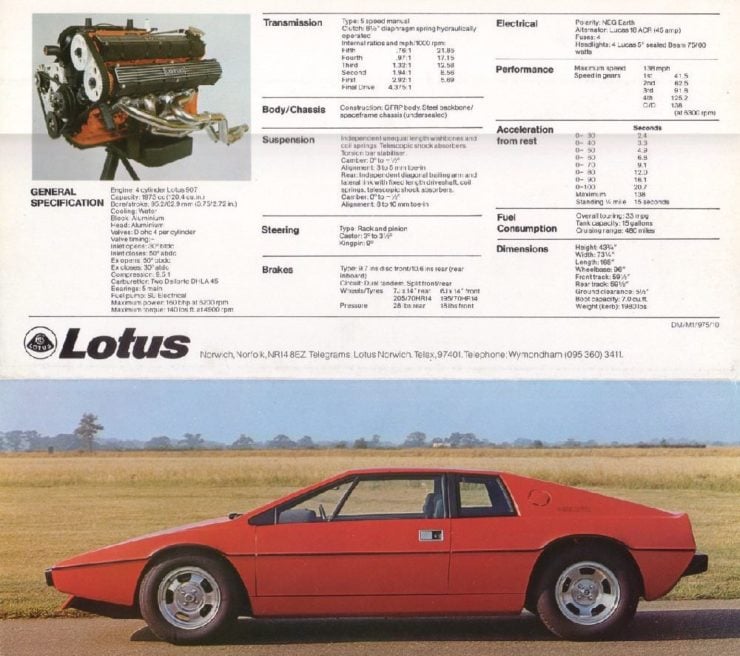
To check the chassis for potential corrosion get the car up on a hoist or on ramps and especially check the points where the bodyshell and chassis meet. at these points Lotus used a layer of felt between the body and chassis to provide noise insulation. Felt absorbs water nicely and wet felt encourages rust.
Visually checking the top of the chassis, where rust is most likely, is not possible but tapping the chassis with a small hammer allows an acoustic test, if the hammer strike results in a clean “clang” then that clanger augurs well: but if its a dull sound then its the dead sound of rusty steel not being at all musical.
The other factor that can cause chassis problems is accident damage. If a driver has managed to go sideways into a decent kerb then that can cause things to get bent, and that damage may not be apparent to the eye but will be detected by a competent specialist with the correct tools. If a chassis has corrosion or damage the solution is to replace it with a new galvanized one. The chassis is the “backbone” of the car, and the Esprit is a performance car that will not perform properly with a bad back.
Body
The Esprit was made in typical Lotus style with a fibreglass body. Fibreglass does not rust, but is not entirely trouble free. The early cars had their fibreglass body shells made in the usual way but from 1975 Lotus pioneered a manufacturing method called Vacuum Assisted Resin Injection (VARI) which enhanced the strength and durablity of the shell significantly.
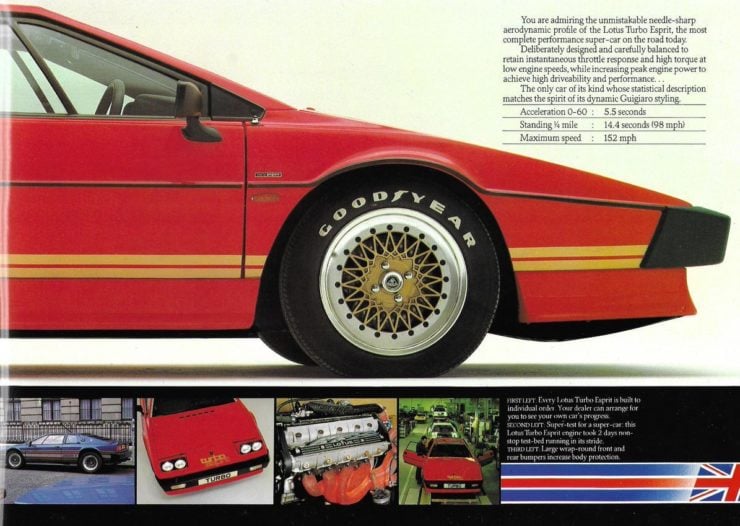
The main potential problem area for the body is incompetently repaired accident damage. Look for unevenness in panels, cracks and splits are a dead giveaway. Body panels can be replaced and if you are looking at a ground-up re-build a complete body shell can be purchased to go with a nice new galvanized chassis.
Conclusion
If you are buying a Lotus Esprit you are buying what can only be thought of as a junior supercar. It is more like buying a light aircraft than just buying a car and so you need to think in terms of it being a specialist performance car that requires specialist maintenance. By far the best protection against the risk of buying your way into a lemon that you will regret is to have your potential purchase thoroughly checked by a Lotus specialist who is not involved in the purchase.
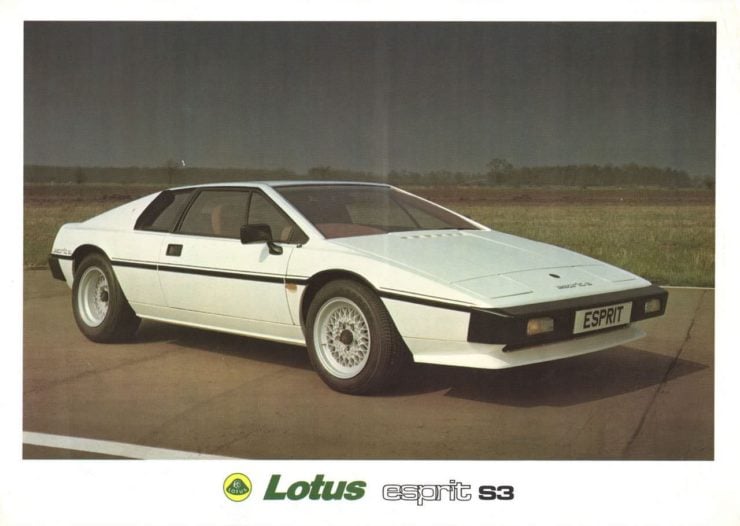
In creating this guide we used a number of expert resources but we strongly recommend a visit to LotusESPRITworld.com. They publish a buying checklist and it is well worth the modest £2 it is priced at.
You can obtain this buyer’s checklist if you click here.
The Beatles sang a song which said “Money can’t buy me love”, which is true, but money can buy certain kinds of happiness. So, we hope your search for your dream Lotus Esprit ends in success, and many years of happiness. But as you start this quest remember to look at as many cars as you can: and before you commit to one to have it thoroughly checked by a Lotus professional who is not involved in the sale.
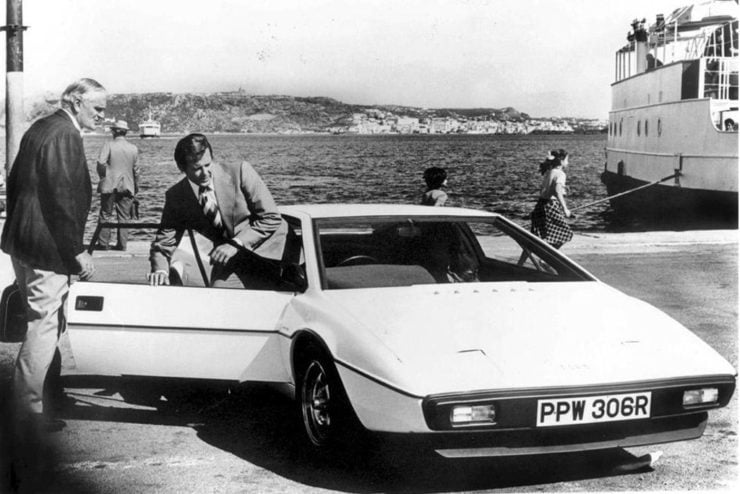
Picture Credits: Lotus, Eon Productions, Mecum Auctions, RM Sotheby’s, and Karissa Hosek @ RM Sotheby’s.

